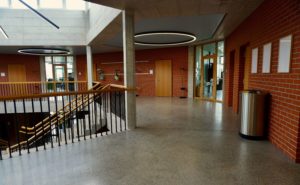Engineered wood flooring is a popular and versatile flooring option that combines the beauty of real wood with enhanced durability. It is essential to understand various aspects of engineered wood flooring before making a decision for your home or commercial space.
Composition:
Engineered wood flooring is constructed with multiple layers of wood. The top layer, known as the wear layer, is made of real hardwood. Beneath the wear layer, there are layers of plywood or high-density fibreboard. This layered construction provides stability and reduces the risk of warping or cupping, making it suitable for various environments.
Appearance:
The top layer of engineered wood is real wood, so it retains the natural and authentic look of hardwood. It comes in various species, colours and finishes, allowing you to choose a style that complements your aesthetic preferences and the overall design of your space.
Cost:
While engineered wood flooring can be more affordable than solid hardwood, the cost varies depending on the quality of the top layer, thickness and overall construction. Higher-quality engineered wood with a thicker wear layer tends to be more expensive but offers better durability and longevity.
Durability:
Engineered wood flooring is more resistant to moisture and temperature fluctuations than solid hardwood. The layered construction provides stability, reducing the risk of expansion and contraction. This makes it suitable for installation in areas with varying humidity levels.
Maintenance:
Maintaining engineered wood flooring is relatively simple. Regular sweeping or vacuuming, along with occasional damp mopping, is usually sufficient. However, it is essential to avoid excessive moisture, as prolonged exposure can damage the wood. Additionally, using rugs and furniture pads can help protect the surface from scratches and dents prolonging its pristine look.
Refinishing:
The ability to refinish engineered wood flooring depends on the thickness of the top layer. Thicker wear layers allow for multiple refinishing sessions, similar to solid hardwood. Thinner wear layers may limit the number of times the floor can be refinished. It is crucial to check the manufacturer’s recommendations regarding refinishing before making a purchase.
Subfloor compatibility:
Engineered wood flooring is suitable for installation over various subfloors, including plywood, concrete and existing flooring. This versatility makes it a practical choice for remodelling projects where the subfloor conditions may not be ideal for solid hardwood installation.
Environmental Impact:
Engineered wood flooring is considered a more sustainable option than solid hardwood. The manufacturing process involves using less wood, as the core layers are often made from fast-growing, renewable resources. Additionally, some products use recycled wood in their construction, giving you peace of mind that your flooring is environmentally friendly.
Trends and Styles:
The market for engineered wood flooring is continually evolving, with new trends and styles emerging. From wider planks to unique finishes, manufacturers offer a variety of options to cater to different design preferences. Staying informed about the latest trends can help you choose a product that aligns with current design aesthetics, and matches your personal style.
Installation:
One of the advantages of engineered wood flooring is its installation versatility. It can be installed as a floating floor, glued down, or nailed down, depending on the product and the subfloor. This flexibility makes it suitable for installation over concrete slabs, which is often challenging for solid hardwood floors.
Engineered wood flooring provides a compelling alternative to traditional solid hardwood. Its layered construction, installation versatility, authentic appearance and enhanced durability make it a popular choice for homeowners and commercial spaces alike. Understanding the various factors, such as installation methods, composition, maintenance and environmental impact, can guide you in selecting the right engineered wood flooring for your specific needs and preferences.
If you are still unsure of the right engineered wood flooring for your space contact Ballator Trading. With decades of experience, their knowledgeable professionals will be able to guide you in finding the perfect flooring option for your unique needs. They also offer professional installations, providing you with peace of mind that your flooring is properly installed and will stand the test of time.




